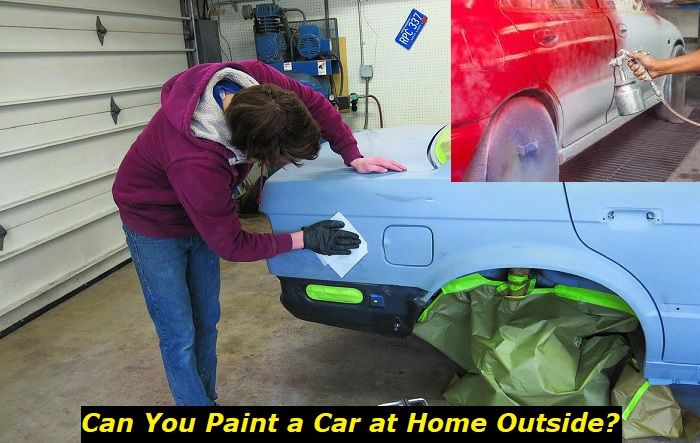Every piece of standard equipment in your bike matters. No matter how big or small of a component it is, it does contribute to the overall performance and reliability of your ride. Likewise, it helps ensure your comfort as well as safety as a rider.
One of the important features of modern bikes nowadays is the bank angle sensor. This piece of tech aids in ensuring your safety and the protection of your motorcycle.

What You'll Discover Here
The primary purpose of this article is to educate readers on how to maintain the overall quality and functionality of their bank angle sensor. It contains the following factors crucial to this topic:
- What is a Bank Angle Sensor?
- How Does the Bank Angle Sensor Work?
- Identifying the Symptoms of a Bank Angle Sensor Failure
- Ways to Fix a Bad Bank Angle Sensor
What is a Bank Angle Sensor?
The angle at which the vehicle deviates from its ideal longitudinal axis is known as banking, or "tilting." If the motorcycle topples over, the Bank Angle Sensor shuts off the engine.
In addition, a banked turn (also known as a banking turn) is a direction change in which the vehicle banks or inclines. But typically, it is on the inside of the turn. For a road vehicle, it is often caused by the roadbed having a transverse downward slope toward the interior of the curve. The bank angle is the angle at which the vehicle is tilted with respect to a horizontal line around its longitudinal axis.
How Does the Bank Angle Sensor Work?
Before going further, it is important for the uninitiated to understand how the feature works. This is to get an idea of the importance of the tech and why its system should be kept in good operating condition.
The Bank Angle Sensor is a vehicular sensor that measures how far a vehicle, especially a motorcycle, leans when viewed from the front. The maximum tilt the motorcycle can have safely without falling over is determined by this angle. Manufacturers may also refer to it as an inclination sensor or tilt sensor. However, it is still a component of an automobile safety system. If the bank angle sensor notices that the motorcycle is toppling over, it shuts off the engine.
Furthermore, if the bike tilts beyond the acceptable limits and starts to topple over, this sensor instantly shuts off the engine as a safety precaution. The bank angle sensor shuts off the engine when the bike tips over during an accident. As a result, it guards against any potential harm to the rider or damage to the bike.
Identifying the Symptoms of a Bank Angle Sensor Failure
Bank angle sensor failure is a serious issue that can potentially lead to a motorcycle accident. It is therefore important to be able to diagnose the primary and secondary symptoms of this failure in order to avoid such an accident.
The primary symptom of bank angle sensor failure is a sudden loss of power to the engine, which can cause the motorcycle to stall. This can be extremely dangerous if it happens while the motorcycle is in motion, as it can cause the rider to lose control of the vehicle.
This happens when the sensor sends the wrong signal to the bike's computer box, and it misleads the system into thinking that you have been in an accident or any condition that has tilted your motorcycle into dangerous angles.
The secondary symptom of bank angle sensor failure is an error message being displayed on the motorcycle's instrument panel. This may indicate that there is a problem with the sensor, but it could also mean something wrong in the system.
If either of these symptoms is present, it is important to stop the motorcycle immediately and have it towed to a qualified repair facility for further diagnosis and repairs. Bank angle sensor failure can be a very serious issue, so it is important to take every precaution to avoid it.
Ways to Fix a Bad Bank Angle Sensor
There are different ways to fix a bad bank angle sensor, and these depend on the cause of the problem. Before proceeding with the methods shown below, make sure that the charging system of your motorcycle is working well first.
Any defect in the battery, alternator, regulator, and other components of the system can interfere with the current of your bike and interrupt its electrical components. One of its possible aftereffects is either a malfunction on the sensors causing them to feed erroneous information to the bike's computer or its computer having difficulty processing the information sent by the sensors.
Based on the most common culprits contributing to this issue though, here's how you can go about them:
1. Bad Sensor
A motorcycle's bank angle sensor is important because it helps the electronic stability control (ESC) system determine whether the motorcycle is leaning too much to the left or right. If the sensor detects that the motorcycle is leaning too much, it will automatically engage precautionary measures to limit or shut off the functions of the bike.
When a bank angle sensor is damaged, it will need to be replaced. However, if the damage is only minor, it may be possible to clean the sensor and get it working again.
To clean the sensor, you will need a soft cloth to gently wipe away any dirt or debris that may be on the sensor. For serious contamination, you may have to remove it for a more thorough cleaning.
You can also use its manufacturer's recommended cleaning solution for it. Be careful not to damage the sensor while you are clearing the dirt that's blocking its functions.
Once the sensor is clean, you can test it by reconnecting it to the motorcycle and starting the engine. If the sensor is working properly, the system should engage when you lean the motorcycle too low on each side.
If the sensor is still not working properly after you have cleaned it, then it will need to be replaced. You can purchase a new sensor from your local motorcycle dealer or online.
Installing the new sensor is relatively easy and can be done by following the instructions that come with the new sensor or based on the make and model of your motorcycle. Once the new sensor is installed, you should test it by starting the engine and leaning the motorcycle to one side or the other.
You may need to take the motorcycle to a dealer or mechanic for further diagnosis if the sensor replacement fails.
2. Faulty Wiring
The importance of the wiring connecting the sensors of a motorcycle cannot be understated. A good connection is essential for the proper functioning of the bike. A bad connection can cause all sorts of problems, from inaccurate readings to complete failure.
When inspecting the wiring on your motorcycle, look for any signs of damage. If you see any frayed wires or exposed copper, that is a sign that the wire is damaged and needs to be replaced. If the damage is not too bad, you may be able to repair it with electrical tape or other means.
If the wiring is excessively dirty, that can also cause problems. Dirt can build up over time and eventually cause a short circuit. To clean the wiring, simply use a soft cloth and some rubbing alcohol. Be careful not to damage the wires while cleaning them, and see to it they are not connected to a power source while doing so to prevent shocks.
Once you have inspected and cleaned the wiring, it is time to test it with a multimeter. This will tell you if there is an open circuit or a short circuit. If everything checks out, then the wiring is in good condition. However, if there is a problem, you will need to replace the damaged wires.
When replacing damaged wires, be sure to use the proper type of wire. The wrong type can cause even more problems down the road. If you are not sure what type of wire to use and how to change it, consult a professional.
3. System Glitches
Software glitches can sometimes trigger false readings from the bank angle sensor, causing the computer to think the bike is leaning too much when it's really not. This can lead to the brakes being applied unexpectedly or the engine shutting off unpredictably depending on the safety measures set by your motorcycle manufacturer.
One way around this is to simply reset the system by restarting your bike or disconnecting its battery for at least 15 minutes but not over 30 minutes. These will often clear any false readings that may be causing the issue.
If the simple reset fails, you may have to upgrade the software of the computer in a process called reflashing, which can help to prevent false readings from occurring further.
Conclusion
If you're having trouble with your bank angle sensor, make sure to check for these potential solutions. With a little bit of troubleshooting, you should be able to get your bike back up and running safely in no time.
Do keep in mind, however, that outside factors may also interfere with the electrical system of your bike causing this error. So, it's possible that the primary solutions shown here may not work at all. The best way to really pinpoint the exact cause and solution to the problem is with the help of a qualified mechanic or technician.
About the authors
The CarAraC research team is composed of seasoned auto mechanics and automotive industry professionals, including individuals with advanced degrees and certifications in their field. Our team members boast prestigious credentials, reflecting their extensive knowledge and skills. These qualifications include: IMI: Institute of the Motor Industry, ASE-Certified Master Automobile Technicians; Coventry University, Graduate of MA in Automotive Journalism; Politecnico di Torino, Italy, MS Automotive Engineering; Ss. Cyril and Methodius University in Skopje, Mechanical University in Skopje; TOC Automotive College; DHA Suffa University, Department of Mechanical Engineering






Add comment